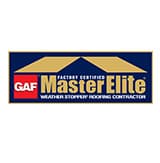Due to its enduring beauty, toughness, and ambiance-enhancing warmth, hardwood flooring is a preferred option among homeowners. But not all hardwood flooring is made equally. There are numerous varieties of hardwood flooring, each with special traits, set up procedures, and suitability for various settings. To assist you in making an informed decision when selecting the ideal flooring solution for your home, we will discuss the many varieties of hardwood flooring in this post.
Solid Hardwood Flooring: A single piece of solid wood, approximately 3/4 inches thick, is used to create solid hardwood flooring. It offers a variety of species and finishes, as well as the authenticity and natural beauty of genuine wood. Solid hardwood is durable over the long run since it can be sanded and polished numerous times. However, because of its sensitivity to moisture and temperature changes, it is less ideal for installations below grade or in humid climates.
Engineered Hardwood Flooring: Multiple layers of wood are used in the construction of engineered hardwood flooring. Real hardwood is used for the top layer, and plywood or high-density fiberboard (HDF) is used for the core layers. The enhanced stability and moisture resistance that this design offers makes engineered hardwood more acceptable for below-grade installations or locations with greater humidity levels. Although it may not be possible to sand and refinish engineered wood as frequently as solid wood, it can still be done.
Bamboo Flooring: A well-liked eco-friendly substitute for conventional hardwood flooring is bamboo. It is a sustainable choice because it is made from the bamboo plant, which grows quickly. Bamboo flooring comes in a variety of hues and patterns and offers a distinctive, modern appearance. Compared to conventional hardwood, it is more moisture resistant, robust, and simple to maintain. To guarantee durability and endurance, it is crucial to pick high-quality bamboo flooring from reliable suppliers.
Laminate Flooring: Due to its ubiquity and likeness to wood, laminate flooring is noteworthy despite not being actual hardwood. A high-density fiberboard (HDF) core with a printed representation of wood grain on top and a protective wear layer make up laminate flooring. It is a reasonable choice with great durability and scratch resistance. Laminate flooring is a popular option for DIY enthusiasts since it is simple to install and often uses a floating floor system. Laminate flooring, on the other hand, cannot be polished or sanded, and it might not have the same genuine appearance and feel as real hardwood.
Exotic Hardwood Flooring: Exotic hardwood flooring refers to species of wood that are not commonly found in North America. These hardwoods have different grain patterns, colors, and textures that can give any room a special touch. Exotic hardwoods with inherent beauty and durability include Brazilian Cherry, Tigerwood, and Mahogany. Remember that exotic hardwoods may cost more and need specialist installation and upkeep due to their unique properties.
It’s important to make the appropriate choice for your home’s hardwood flooring. Each type of hardwood—solid hardwood, engineered hardwood, bamboo, laminate, and exotic hardwoods—has special properties that make them suitable for particular conditions. When making your choice, take into account aspects like durability, moisture resistance, installation procedures, maintenance needs, and budget. Understanding the various kinds of hardwood flooring out there will help you choose the one that best fits your demands, style, and long-term objectives, giving your home a stunning and sturdy foundation.














